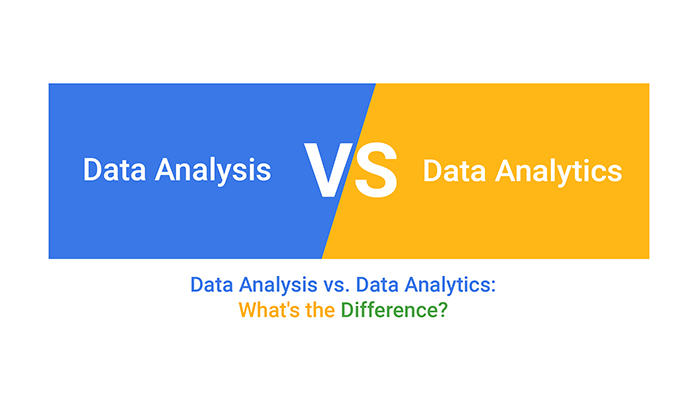
Introduction:
In today’s data-driven world, organizations are increasingly relying on data to drive decision-making and gain a competitive edge. Two terms that often come up in this context are data analysis and data analytics. While they share similarities, they have distinct roles and methodologies. In this article, we will delve into the differences between data analysis and data analytics, explore their unique contributions, and highlight their importance in extracting insights from data.
Data Analysis: Unveiling Patterns and Relationships
Data analysis is the process of inspecting, cleaning, transforming, and modeling data to uncover patterns, draw conclusions, and make informed decisions. It involves examining datasets using statistical techniques, exploratory data analysis, and data visualization. Data analysts possess strong analytical and critical-thinking skills, using tools like Excel, SQL, and statistical software to explore and interpret data. They focus on extracting meaningful insights, identifying trends, and providing descriptive summaries of the data.
Data Analytics: Extracting Insights and Driving Actions
Data analytics goes beyond data analysis by incorporating advanced techniques, including predictive modeling, machine learning, and data mining. It involves using mathematical algorithms and statistical models to extract actionable insights from data and make data-driven decisions. Data analysts and data scientists collaborate in the field of data analytics, employing sophisticated tools like Python, R, and data visualization platforms. Data analytics aims to answer specific business questions, enable forecasting, and provide valuable insights for strategic decision-making.
Distinct Focus and Objectives
Data analysis and data analytics have distinct focuses and objectives within the realm of data-driven decision-making. Data analysis primarily deals with examining historical data to identify patterns, trends, and correlations. It seeks to understand what has happened and draw insights from past data. On the other hand, data analytics is forward-looking and aims to predict future outcomes, make forecasts, and uncover opportunities. It leverages predictive modeling and advanced algorithms to generate actionable insights for proactive decision-making.

Methodologies and Techniques
Data analysis and data analytics employ different methodologies and techniques to extract insights from data. Data analysis typically involves exploratory data analysis, statistical tests, and visualization techniques to understand the data’s characteristics. It emphasizes data cleaning, transformation, and basic statistical measures. Data analytics, on the other hand, utilizes advanced statistical modeling, machine learning algorithms, and data mining techniques. It focuses on predictive modeling, clustering, classification, and other advanced analytical approaches to uncover hidden patterns and make accurate predictions.
Value and Impact
Both data analysis and data analytics play critical roles in leveraging data for organizational success. Data analysis provides valuable insights into past performance, customer behavior, and operational efficiency. It helps identify areas for improvement, detect anomalies, and optimize existing processes. Data analytics, on the other hand, enables organizations to anticipate future trends, forecast outcomes, and make proactive decisions. It supports strategic planning, risk assessment, and innovation by leveraging predictive modeling and advanced algorithms.
Collaboration and Integration
Data analysis and data analytics are not mutually exclusive but rather complementary disciplines. They often work in tandem, with data analysis serving as a foundation for data analytics. Data analysts play a crucial role in preparing, cleaning, and structuring data for analysis. They provide the necessary groundwork for data analytics initiatives, ensuring data quality and integrity. Data analytics, in turn, builds upon the insights generated by data analysis to create predictive models, generate forecasts, and provide actionable recommendations.
Conclusion: Harnessing the Power of Data
Data analysis and data analytics are invaluable components of the data-driven decision-making process. While data analysis focuses on uncovering insights from historical data, data analytics takes it a step further by leveraging advanced techniques and predictive modeling to make proactive decisions. Both disciplines contribute to understanding patterns, extracting insights, and enabling informed decision-making. By embracing both data analysis and data analytics, organizations can harness the power of data to gain a competitive edge and drive innovation.